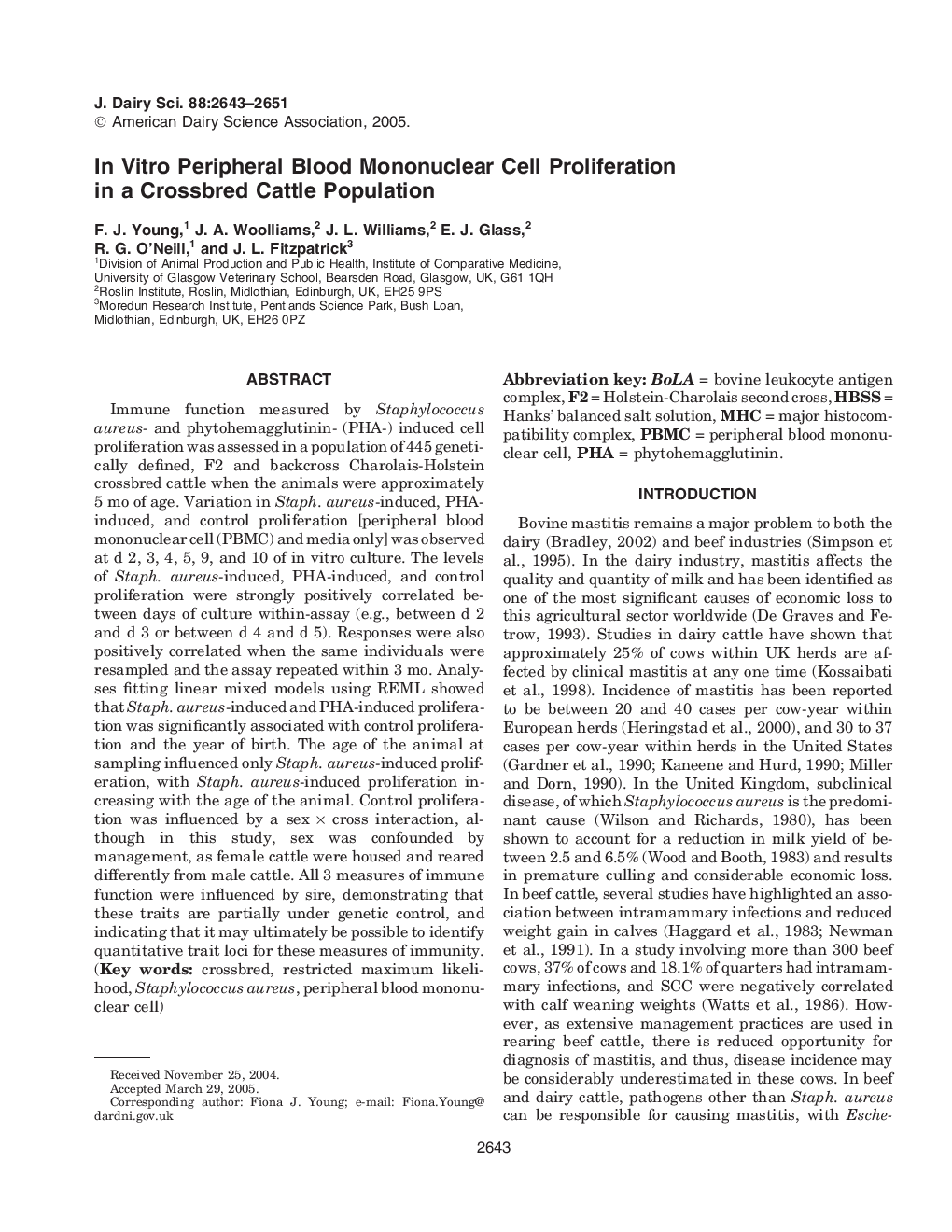| Article ID | Journal | Published Year | Pages | File Type |
|---|---|---|---|---|
| 2442058 | Journal of Dairy Science | 2005 | 9 Pages |
Abstract
Immune function measured by Staphylococcus aureus- and phytohemagglutinin- (PHA-) induced cell proliferation was assessed in a population of 445 genetically defined, F2 and backcross Charolais-Holstein crossbred cattle when the animals were approximately 5 mo of age. Variation in Staph. aureus-induced, PHA-induced, and control proliferation [peripheral blood mononuclear cell (PBMC) and media only] was observed at d 2, 3, 4, 5, 9, and 10 of in vitro culture. The levels of Staph. aureus-induced, PHA-induced, and control proliferation were strongly positively correlated between days of culture within-assay (e.g., between d 2 and d 3 or between d 4 and d 5). Responses were also positively correlated when the same individuals were resampled and the assay repeated within 3 mo. Analyses fitting linear mixed models using REML showed that Staph. aureus-induced and PHA-induced proliferation was significantly associated with control proliferation and the year of birth. The age of the animal at sampling influenced only Staph. aureus-induced proliferation, with Staph. aureus-induced proliferation increasing with the age of the animal. Control proliferation was influenced by a sex Ã cross interaction, although in this study, sex was confounded by management, as female cattle were housed and reared differently from male cattle. All 3 measures of immune function were influenced by sire, demonstrating that these traits are partially under genetic control, and indicating that it may ultimately be possible to identify quantitative trait loci for these measures of immunity.
Keywords
Related Topics
Life Sciences
Agricultural and Biological Sciences
Animal Science and Zoology
Authors
F.J. Young, J.A. Woolliams, J.L. Williams, E.J. Glass, R.G. O'Neill, J.L. Fitzpatrick,
